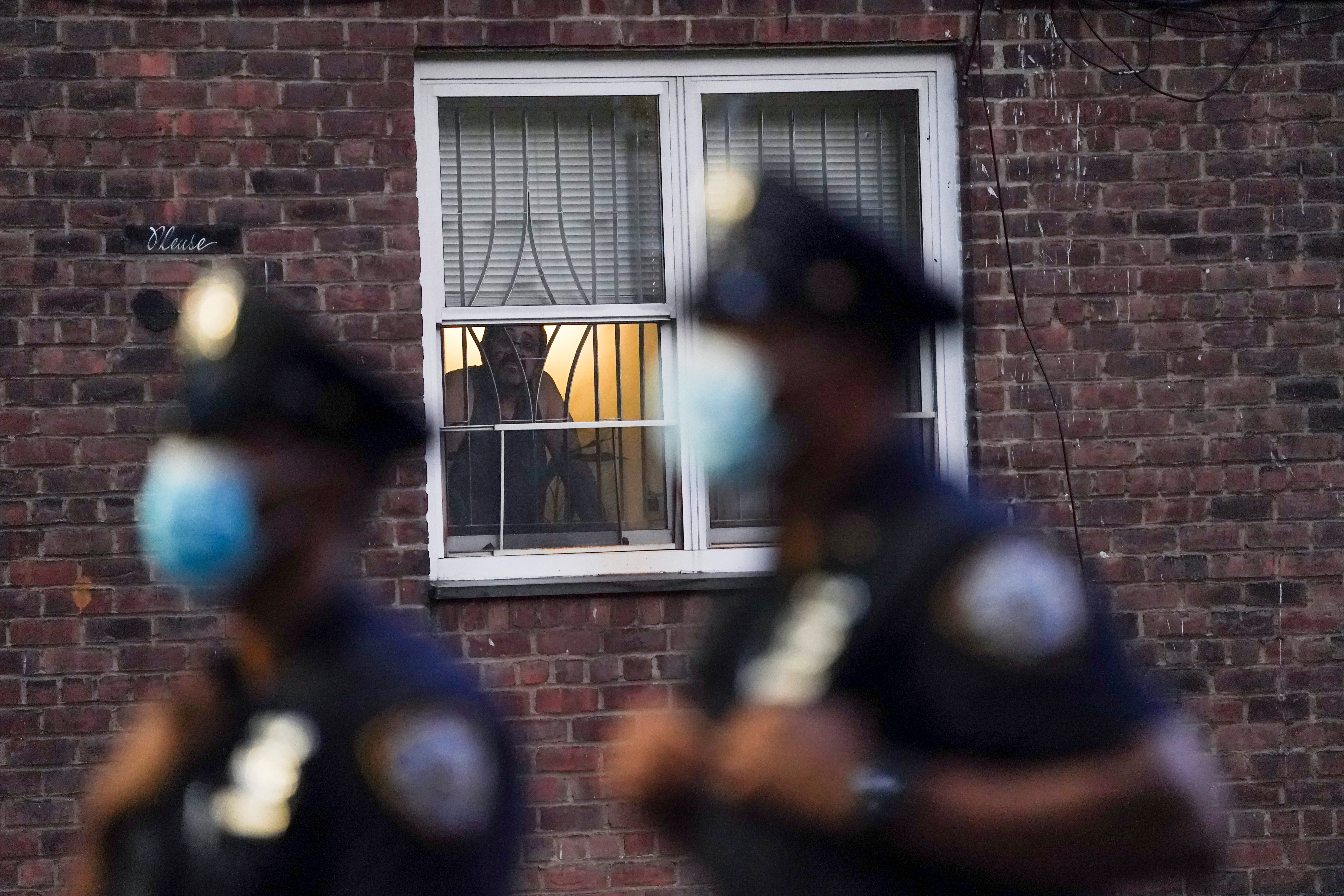'Dark period': Killings spike in NYC amid pandemic, unrest
New York City is closing the books on its bloodiest year after a long time of being known as the safest big city in America

Your support helps us to tell the story
From reproductive rights to climate change to Big Tech, The Independent is on the ground when the story is developing. Whether it's investigating the financials of Elon Musk's pro-Trump PAC or producing our latest documentary, 'The A Word', which shines a light on the American women fighting for reproductive rights, we know how important it is to parse out the facts from the messaging.
At such a critical moment in US history, we need reporters on the ground. Your donation allows us to keep sending journalists to speak to both sides of the story.
The Independent is trusted by Americans across the entire political spectrum. And unlike many other quality news outlets, we choose not to lock Americans out of our reporting and analysis with paywalls. We believe quality journalism should be available to everyone, paid for by those who can afford it.
Your support makes all the difference.Heralded as the safest big city in America in recent years, New York City is closing out its bloodiest year in nearly a decade, grappling with a surge in homicides and a pandemic authorities say has helped fuel violence.
The city had recorded 447 killings as of Tuesday, a 41% increase over last year and the largest number since 2011. The number of people shot has more than doubled last year’s total, nearing a 14-year high.
Among the victims: a 1-year-old boy sitting in his stroller at a summer cookout; a 53-year-old teacher walking his dog; and a 43-year-old mother looking out the window of her child’s third-floor bedroom. All three were killed by stray bullets.
The carnage, however startling, pales in comparison to the bullet-riddled years of the early 1990s. Still, 2020 marked the third consecutive year of rising homicides after New York City recorded a modern-era low of 292 killings in 2017.
Police leaders are eagerly anticipating the turn of the calendar, pointing to unprecedented challenges officers faced as COVID-19 brought the city to its knees.
Crimefighting this year has been complicated by everything from budget constraints to the ubiquity of mask wearing. Clearance rates fell as detective squads were stricken by the virus, and faith in law enforcement faltered amid police killings of Black people.
“We're definitely coming out of that dark period,” Police Commissioner Dermot Shea said at police headquarters Tuesday. “The confluence of COVID into the protests into all of the debate about defunding the police — I can’t imagine a darker period.”
The spike in violence started just as the pandemic began disrupting lives and shuttering businesses, and it reached a crescendo over the summer, as the city recorded an average 57 killings per month in July, August and September. By comparison, each of those months averaged 33 homicides in 2019.
The surge caught the attention of President Donald Trump, who threatened in August to send federal agents to his hometown if local authorities couldn’t stop the bloodshed.
But New York’s crime spike paralleled an uptick in violence across the U.S. in a year shaped by pandemic-related restrictions and street protests against police violence in the wake of the killing of George Floyd in Minneapolis.
“The coronavirus has had a devastating impact on society in low-income communities, and it just adds to the social disorganization that exists,” said Samuel Walker, a policing expert and professor emeritus at the University of Nebraska at Omaha.
In New York, police officials have blamed bail reforms that went into effect at the start of the year for putting offenders back on the streets, but there’s little evidence people freed from jail are behind the new crimes.
At the same time, the police department has been dealing with a wave of retirements that Shea said “couldn't go any higher,” fewer recruits because of budget cuts and a mid-year upheaval in how it roots out gun violence.
The NYPD in June disbanded its plainclothes anti-crime units, which focused primarily on seizing illegal guns, amid criticism of their aggressive tactics and involvement in a disproportionate number of police shootings and complaints. The change came amid what Shea described as “an endless supply of guns.”
In July, after a “Defund the Police” protest became a full-blown occupation outside City Hall, the city shifted $1 billion out of the police budget by moving school security functions back to the city’s school system, cutting overtime and eliminating a nearly 1,200-person recruiting class.
Still, New York remains far safer than in the early 1990s, when there were more than 2,000 killings per year.
It’s also statistically far safer than many of the other big cities also seeing an increase in killings. The nation’s largest city, with about 8.3 million residents, New York City has a homicide rate of about 5.2 per 100,000.
Los Angeles, which has 4 million residents, had 322 homicides as of Dec. 12 — up 30.4% from 247 at the same point last year — for a rate of about 8 per 100,000. Killings in Chicago, meanwhile, are up about 56% this year.